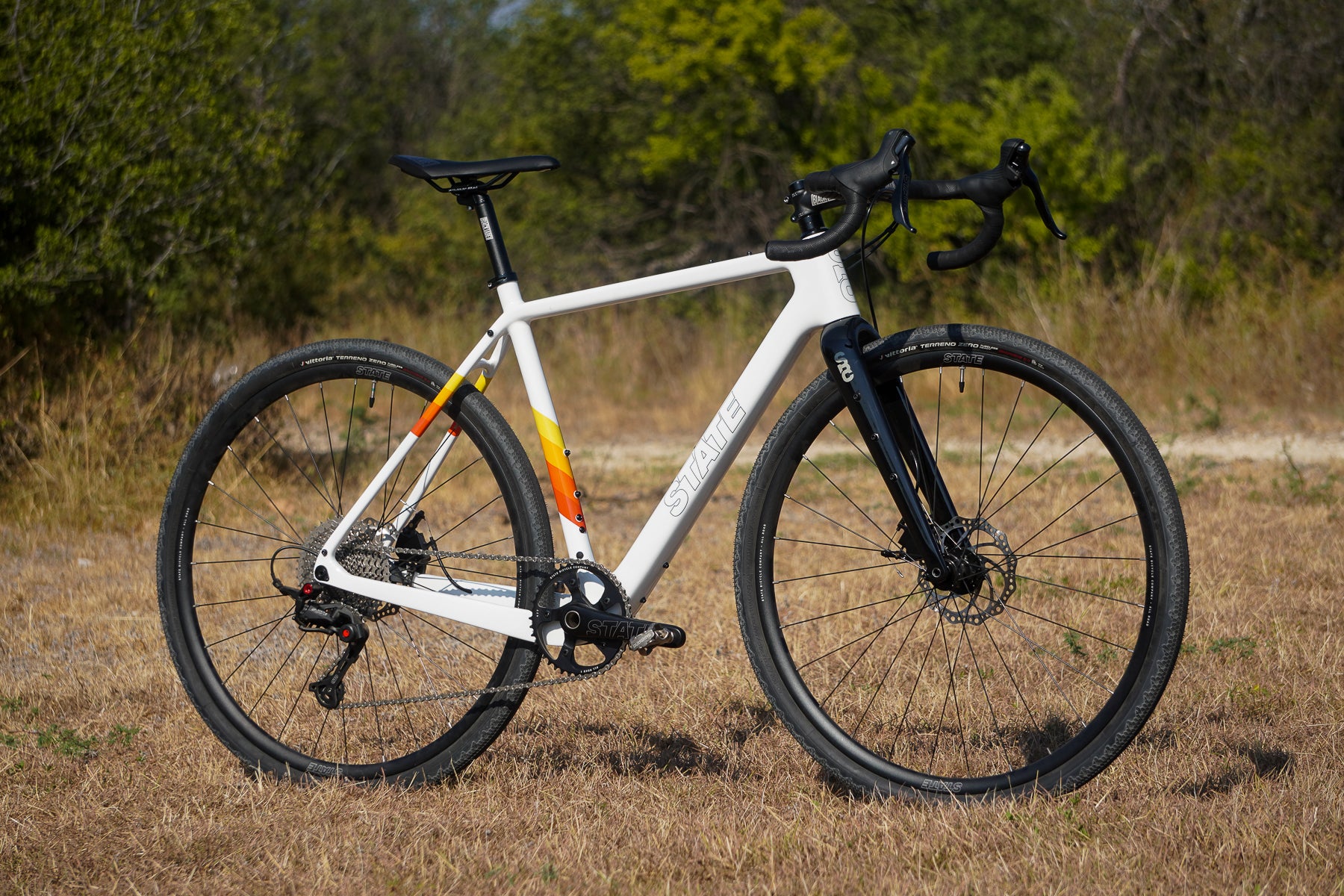
Artikel
10
januari
State Carbon All-Road Bike Review: Affordable But Imperfect
State Bicycle Company entered the cycling world in 2009 with colorful singlespeed and fixed gear bikes. Over the years, the company has expanded to offer a range of road and gravel bikes in addition to a healthy family of fixed gear frames. Traditionally, all of State’s complete bike offerings are made of aluminum or steel.
That is until they dropped the State Carbon All-Road.
The Carbon All-Road is the brand’s first complete carbon gravel bike. It’s not like State forgot its origins though — affordably-priced build kits, several avenues for customization, and impressive looks are still the brand’s modus operandi. And while the bike is more expensive than almost all of their previous offerings, the price still comes in dramatically lower than most other carbon gravel bikes.
Does that make the State Carbon All-Road too good to be true? Not quite.
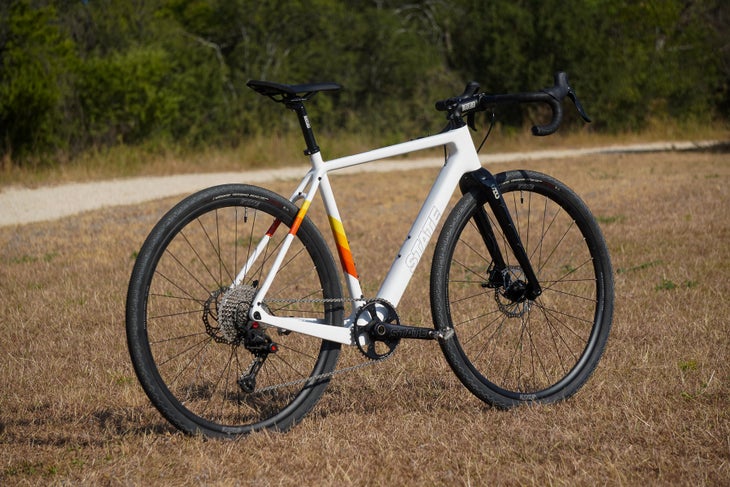
Quick hits: Six things to Know about the State Carbon All-Road
- T800 carbon frame and fork
- Frame weight is a quoted 2.5 lbs (1130 grams); Complete bikes weigh as little as 21.4 lbs (9.7 kg) in a size XS
- Max 700c x 45 mm or 650b x 55 mm tire clearance
- Between 68 and 58 mm trail figures
- Five sizes, from XS to XL
- Price: Starting at $1999 (complete); $1299 (frameset)
Build details
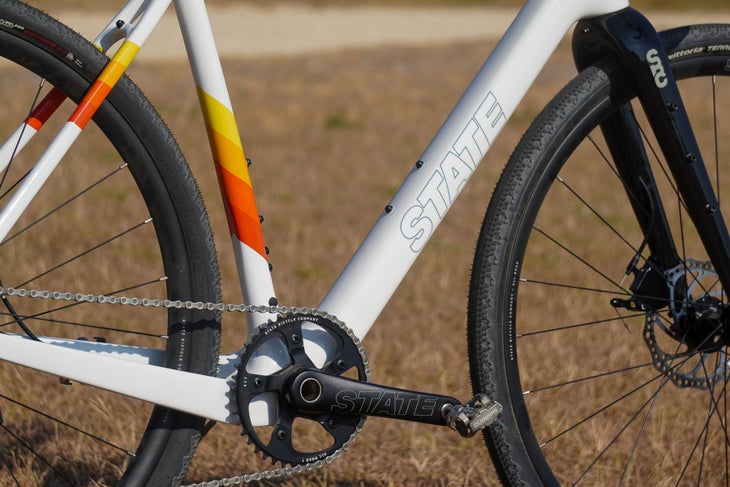
What’s in a name? State Bicycle Company calls this an all-road bike, but based on numbers and build specs it looks like a dedicated gravel bike. Judging this as a gravel bike, I think State’s latest bike is a solid, if imperfect offering.
The calling card for this bike is the carbon frame, a new addition to a State lineup that otherwise sticks to steel and aluminum frames. It is based on what they’re calling T800 carbon fiber, and it looks like it ticks all the boxes.
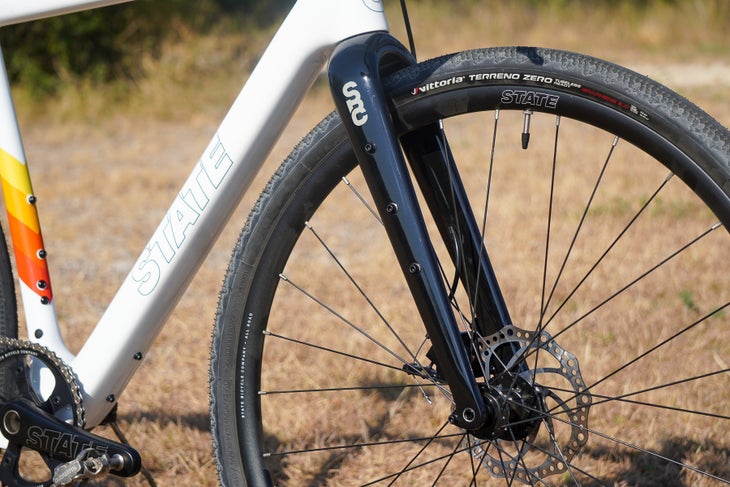
For one, there are plenty of mounts: a rear rack mount, spots for fenders front and rear, a top tube bag mount, and a third bottle cage mount by the bottom bracket. The fork even features a three-pack mount to carry bottles, racks, and bags. While there can always be more mounts, there are plenty of options to carry your gear.
The State Carbon All-Road uses standard components. Cable routing is external from the bars until the cables enter at the fork and down tube. The stem itself itself is conventional, as are the bars and stem. There’s also a threaded bottom bracket and thru axles front and rear, all of which should make maintenance and component upgrades straightforward.
Tire clearance is good. The Carbon All-Road fits 700c tires up to 45 mm, or 650b up to 50 mm.
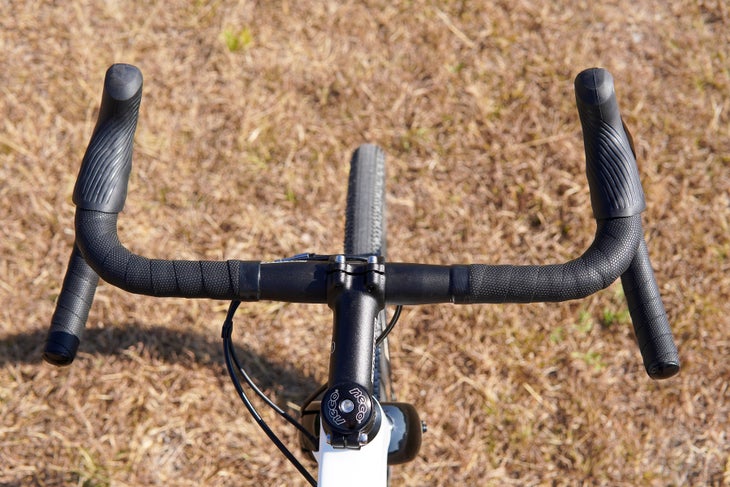
Look at the competition and you’ll find that their carbon gravel bikes cost $1000 or $1500 more than the State Carbon All-Road. Much of that comes down to the base build kit, most of which is shared with the cheaper State All-Road offerings in steel and alloy frames.
One of the standout features of State’s builds here is that you can buy the bike with either wheel size. Paralysis by analysis? Get a second wheelset including a cassette, rotors, and tires for $400. Additionally, State offers the ability to swap for their All-Road Suspension fork should riders want to add some extra control over the rough stuff.
This level of build customization is uncommon, but especially unique at this price point. The downside to this is that while the rims and tires are tubeless compatible, riders will have to pay an additional $50 for a tubeless tire kit. The bike should be pre-taped for tubeless usage at this price point, even if it doesn’t come with valves or sealant.
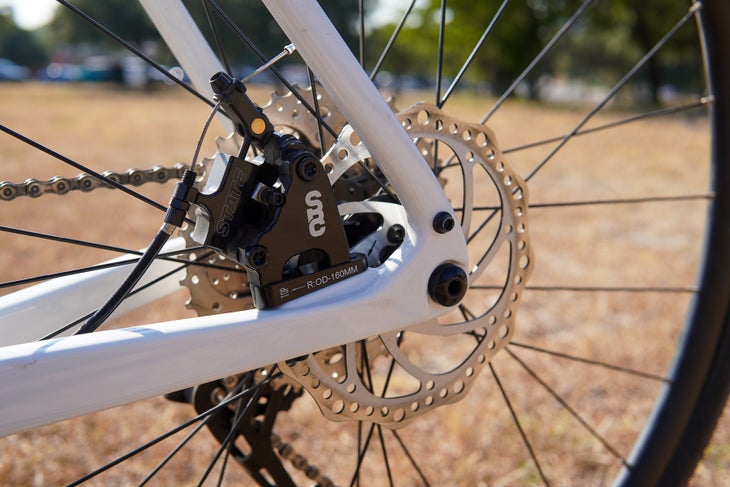
Perhaps most interesting of the State-branded components are the brake calipers, which are a cable-actuated hydraulic caliper. The calipers offer plenty of adjustment, with adjusters for each side of the brake piston as well as a barrel adjuster at the caliper itself.
All things considered, the Carbon All-Road is refreshingly uncomplicated. That alone deserves acknowledgment.
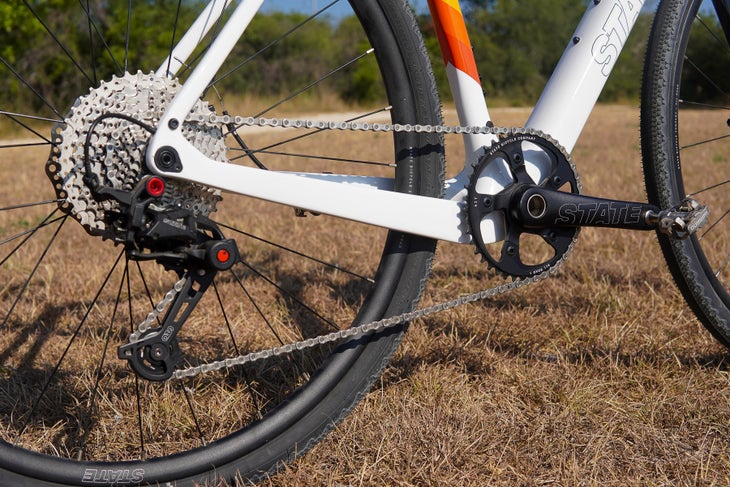
As mentioned, the Carbon All-Road comes with myriad ways to customize the bike, be it with different wheels, a different fork, different frame colors, and either a State-branded Sensah drivetrain or a Sram Apex AXS build. My build should be State’s most popular build: a Carbon All-Road with the Standard State All-Road 1 drivetrain, State 700c wheels, and a full-carbon fork.
State claims a complete size S bike weighs in at 21.5 pounds (9.75 kg); my bike weighed in at 21.6 pounds (9.8 kg) with tubes in the tires.
Geometry
| Size | XS | S | M | L | XL |
| Seat Tube Length | 500 | 530 | 550 | 570 | 590 |
| Top Tube Length | 525 | 540 | 560 | 580 | 580 |
| Head Tube Length | 115 | 130 | 150 | 170 | 190 |
| Chainstay Length | 435 | 435 | 435 | 435 | 435 |
| Front-Center | 584 | 694 | 610 | 625 | 646 |
| Seat Tube Angle (degrees) | 73.5 | 73.5 | 73.5 | 73.5 | 73.5 |
| Head Tube Angle (degrees) | 71 | 71.5 | 72 | 72.5 | 72.5 |
| Bottom Bracket Drop | 70 | 70 | 70 | 70 | 70 |
| Fork Length | 395 | 395 | 395 | 395 | 395 |
| Fork Rake | 50 | 50 | 50 | 50 | 50 |
| Wheelbase | 1009 | 1020 | 1035 | 1051 | 1071 |
| Stack | 536 | 552 | 573 | 593 | 613 |
| Reach | 366 | 376 | 390 | 404 | 418 |
| (All measurements in mm unless noted) |
Geometry for the State Carbon All-Road is straightforward. The rear of the bike is on the longer side for a bike with this kind of tire clearance, with 435mm chainstays across all sizes paired to a more conventional 1035 mm wheelbase in a size medium.
Its 70 mm bottom bracket drop is on the taller end for a gravel bike, much less most modern all-road bikes. A trail figure ranging from 67.3 mm in a size XS to 57.6 mm in a size XL indicates the steering should make for a bike that turns relatively quickly.
Fit measurements are straight down the middle for a gravel bike. Riders should be able to pursue a lower, more aggressive or more upright position without much work.
The State Carbon All-Road is available in five sizes from XS to XL. State says riders 5 foot 1 inches (1.55 m) up to riders 6 foot 4 inches (1.93 m) tall should be comfortable on the bike. Small sizes have a relatively high standover however; try before you buy!
State Carbon All-Road vs the competition
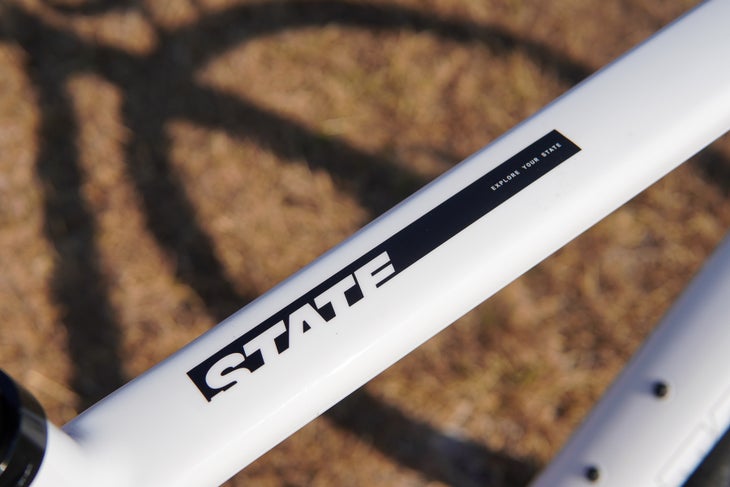
You’re likely to find similar gravel bikes at this price point, but not one that has everything the Carbon All-Road offers. The Giant Revolt is available with a carbon frame and a Shimano GRX 10-speed drivetrain but costs $400 more. The Specialized Diverge isn’t available with a carbon frame under $3000; a similar story applies to the Canyon Grail and Cannondale Topstone Carbon.
All that said, I think the best competition for the Carbon All-Road comes from State itself. Their 6061 Black Label All-Road with a SRAM Apex AXS build doesn’t cost all that much more, but it swaps a carbon frame for an aluminum frame and wireless shifting.
That build rectifies many of the drawbacks of this build – namely around braking – and adds the ease of use of SRAM’s drivetrains. Given the budget, that is the bike I would likely go for in the State Bicycle Company lineup.
Riding the State Carbon All-Road
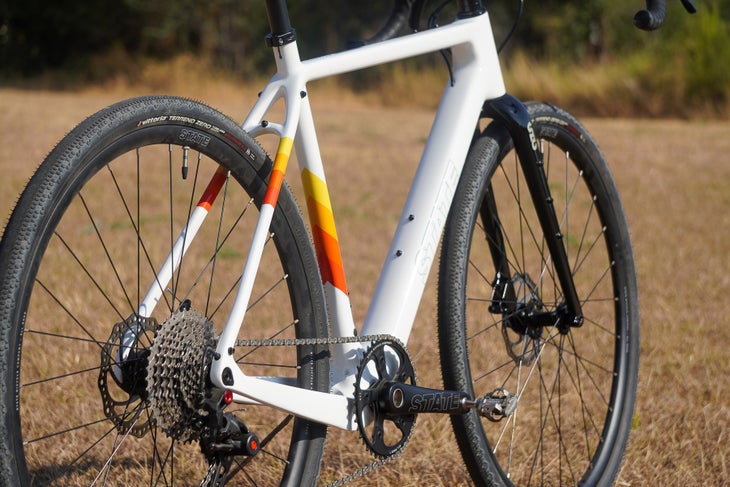
The State Carbon All-Road impresses at first glance. The paint has a nice sparkle to it. Outside of the high-end Vittoria Terreno Zero tires, just about everything is State branded, making the bike look and feel more cohesive.
Theoretically, carbon is as responsive as aluminum, comfortable like steel, but lighter than both. For the most part, the carbon frame lives up to the hype.
I found the State Carbon All-Road is happiest on terrain akin to that found at Gravel Locos or SBT GRVL. Those events feature long dirt roads that aren’t especially technical, allowing the responsiveness and straight-line stability of the Carbon All-Road’s frame to shine.
Compared to State’s alloy model, the Carbon All-Road is more responsive as you put power to the pedals. It’s better at damping those small vibrations from gravel or chip seal roads. On paper, the bike features quick handling; in practice, the 42 cm (measured) flared drop handlebar makes the bike feel quite stable.
All good then, right? Not quite.
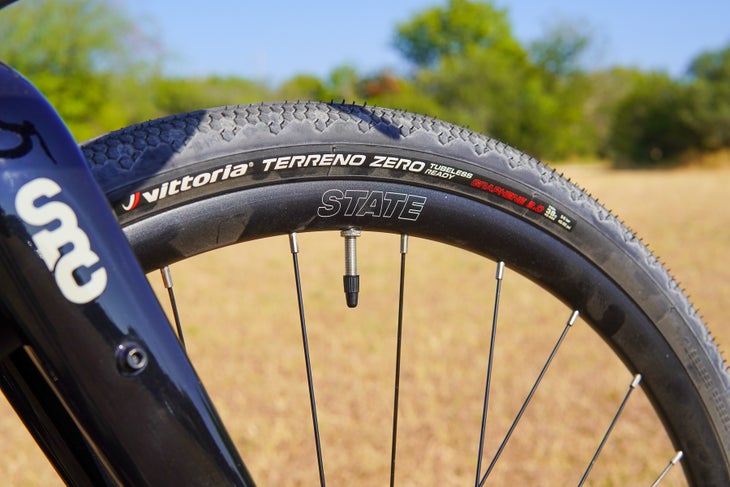
The 38 mm Vittoria Terreno Zero tires measure 40 mm with a 23, or 25 mm internal width rim. But with these 19 mm internal rims? They measure just 37 mm, leaving the bike much more sensitive to tire pressure than most other gravel bikes. Too high and the bike feels stiff; too low and the tires (with tubes in them!) can feel squirrely.
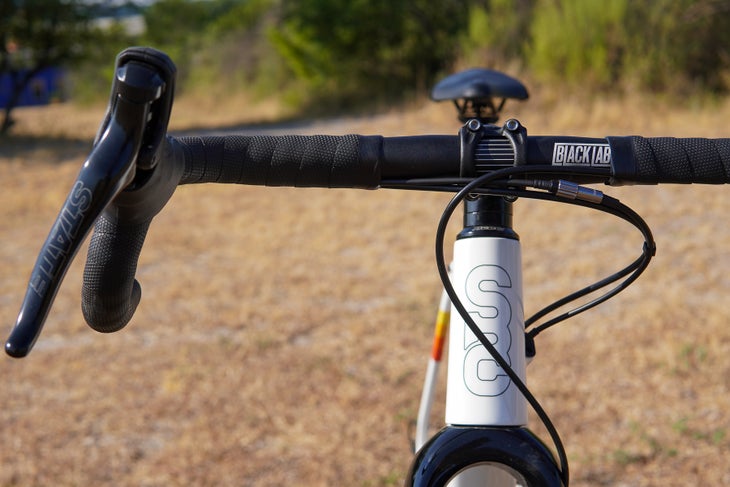
The State-branded Sensah shift lever itself offers light yet positive shifts. I found consistent chain tension across its 10-speed 1x drivetrain, and my chain never dropped in my time riding the bike on road, single track, and gravel. However, that single shift lever is integrated into the brake lever, making it nearly impossible to both brake and shift gears.
The remaining finishing kit is also sourced by State Bicycle Co. The alloy bars offer quite a bit of flare paired with compact reach and drop numbers. The State-branded saddle was plenty comfortable for my personal preferences, though I know previous reviewers had trouble with it.
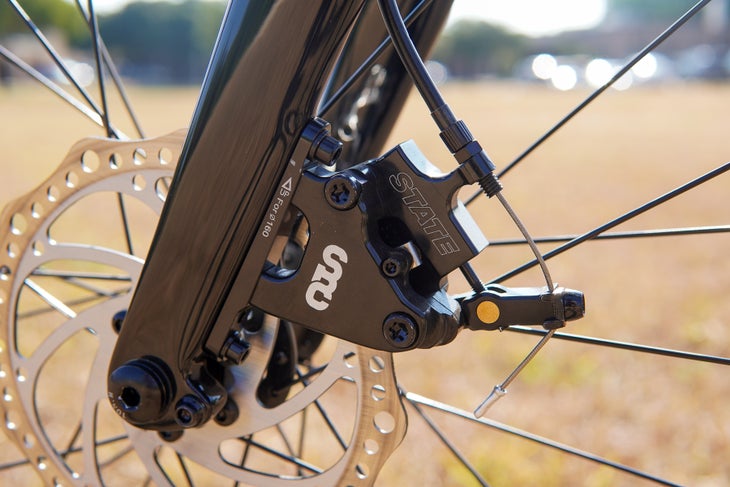
Braking performance left a bit to be desired. Braking performance improved after bedding in the pads, as should be expected. That said, performance still wasn’t improved to where I would be confident on steep terrain with them. Swapping for a nicer brake rotor improved things only slightly, leading me to believe the pads or the brake calipers themselves could be improved upon.
Other issues won’t affect performance, but they do stand out nonetheless. The stem bolts were oversized for my Hex keys making them more liable to be stripped. The alloy seat post arrived with marring from sliding the seat post in and out of the frame.
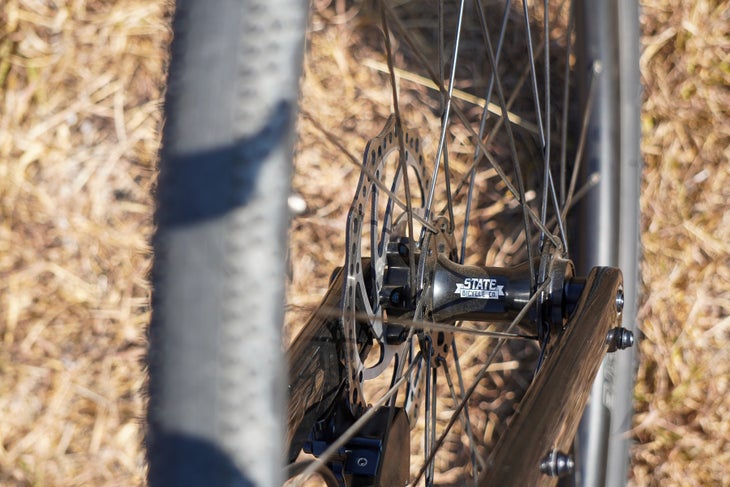
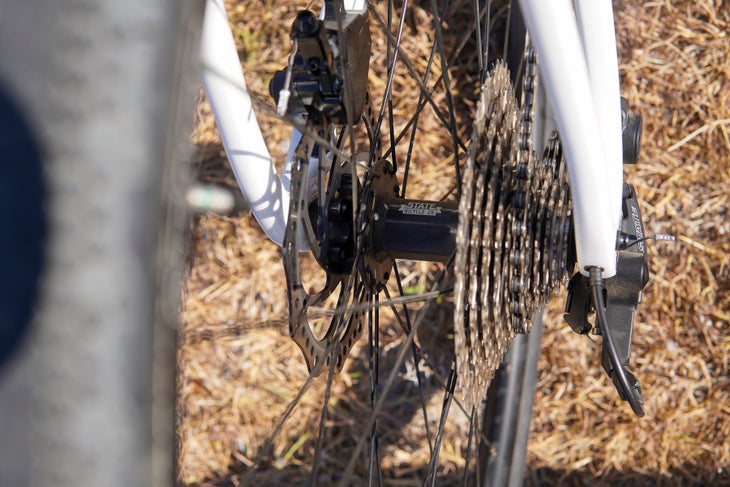
The gripe most people likely won’t notice, however, was the wheel build. Traditionally, most wheel builders will line up the main hub logo with the rim valve hole such that you can see the logo through the hole. Not the case here, with the hub logo ever so slightly misaligned.
What happens should your State bike show up with an issue like this? Here’s what they have to say:
Should a customer have an issue we would work with that customer to figure out a resolution that works best for that individual, that would consist of either a partial refund/gift card, an exchange to correct a potential issue, or a return/refund (this is less than 0.5% of our orders).
Similar to the slightly oversized bolts and marred seat post, wheels built this way do not make the bike worse to ride. The important part is that the wheels arrived true and with uniform spoke tension, something that more costly bikes often have issues with. But these choices demonstrate that a good portion of the budget for this bike is spent on the carbon frame and fork.
Conclusion
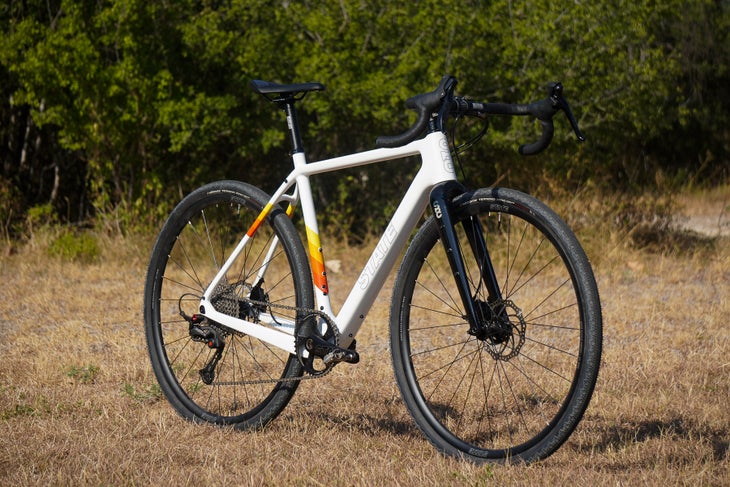
What level of expectations should you have for a gravel bike with a $2000 price point? The carbon frame is near-unheard of at this price, but money spent on a more expensive carbon frame means less money spent on the rest of the bike. As a result, the State Carbon All-Road receives a build kit that is a tier or two below bikes at this price with aluminum frames.
There are plenty of reasons to be excited about this bike. The build kit checks every box for a new gravel bike, but the weaknesses add up. You may not notice the misaligned up logo while riding, but you’ll notice the braking performance every time you pull the brake lever.
Those searching for a good-looking, accessibly-priced carbon gravel bike have found one with the State Carbon All-Road. The foundation of the bike – its carbon frame – is worth upgrading. If this is your first gravel bike, however, I’m much more inclined to recommend State’s own alloy gravel bike, particularly with a Sram Apex AXS drivetrain.
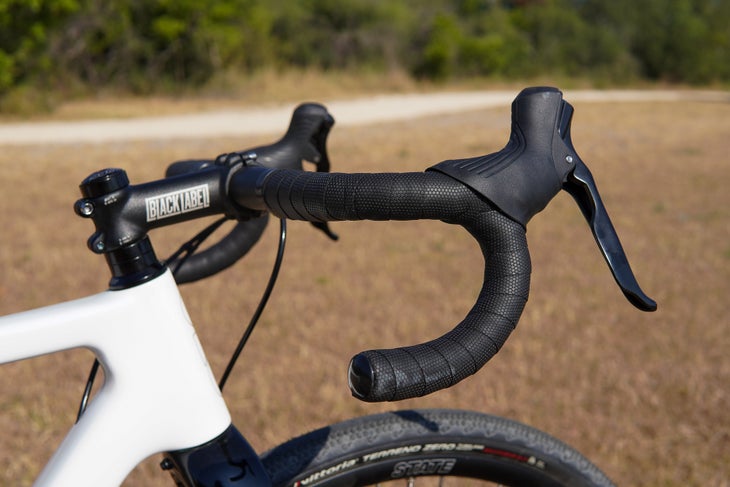
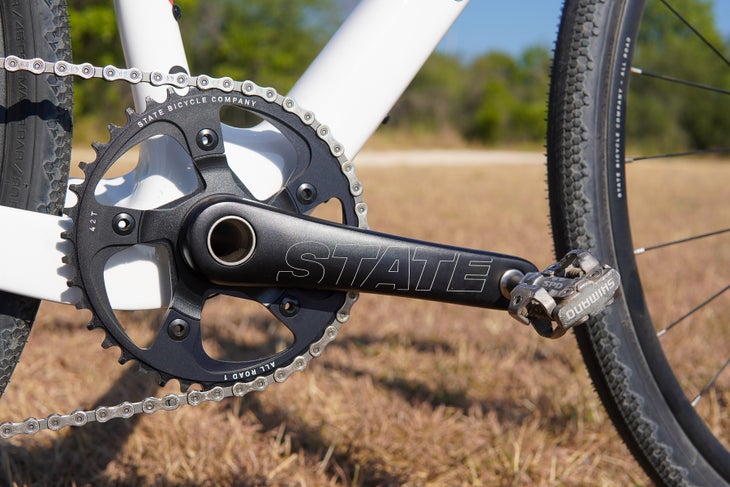

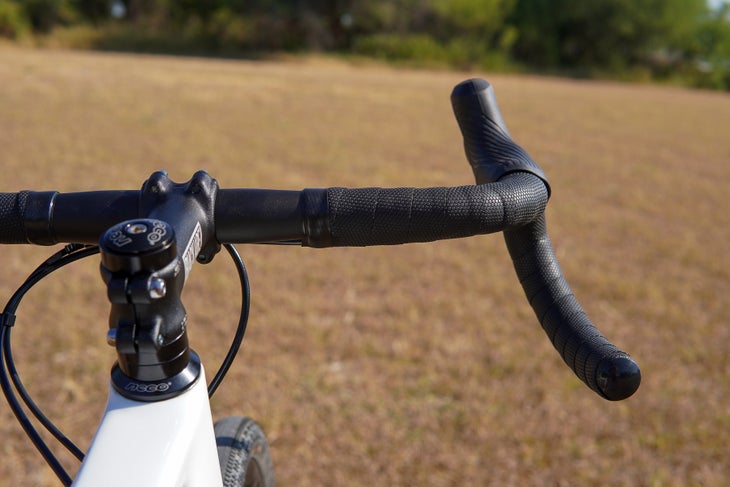
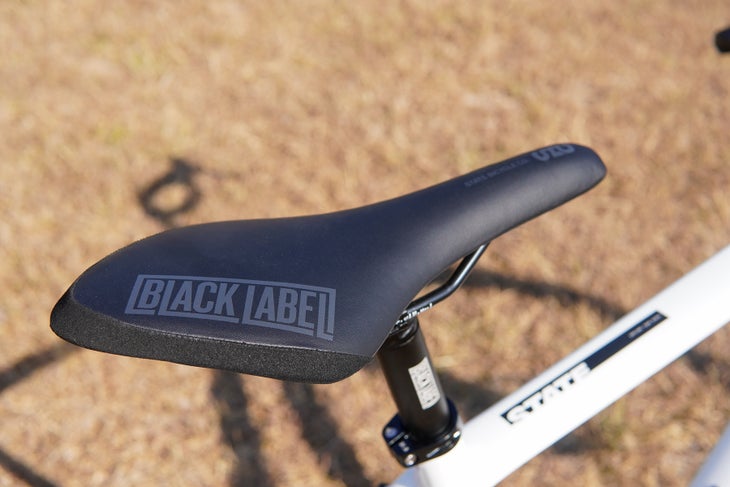
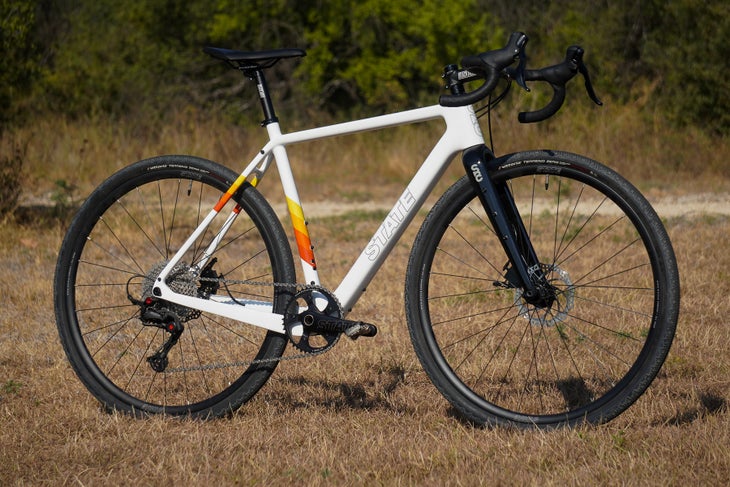
What's your reaction ?
Follow us on Social Media
Recent posts

July 27, 2024
Nieuwe kabinetsvisie: samen sterker tegen cyberdreigingen

July 24, 2024
Navigating AI Implementation: Try these strategies to overcome resistance.

July 24, 2024
Sick Leave Policy Netherlands Guidance for HR and Entrepreneur.

July 24, 2024
CSRD Reporting: Mandatory Reporting on Corporate Sustainability.

July 24, 2024
Training Budget: Investing in Employee Development.

 Inloggen
Inloggen
 Registreren
Registreren






Comments (0)
No reviews found
Add Comment